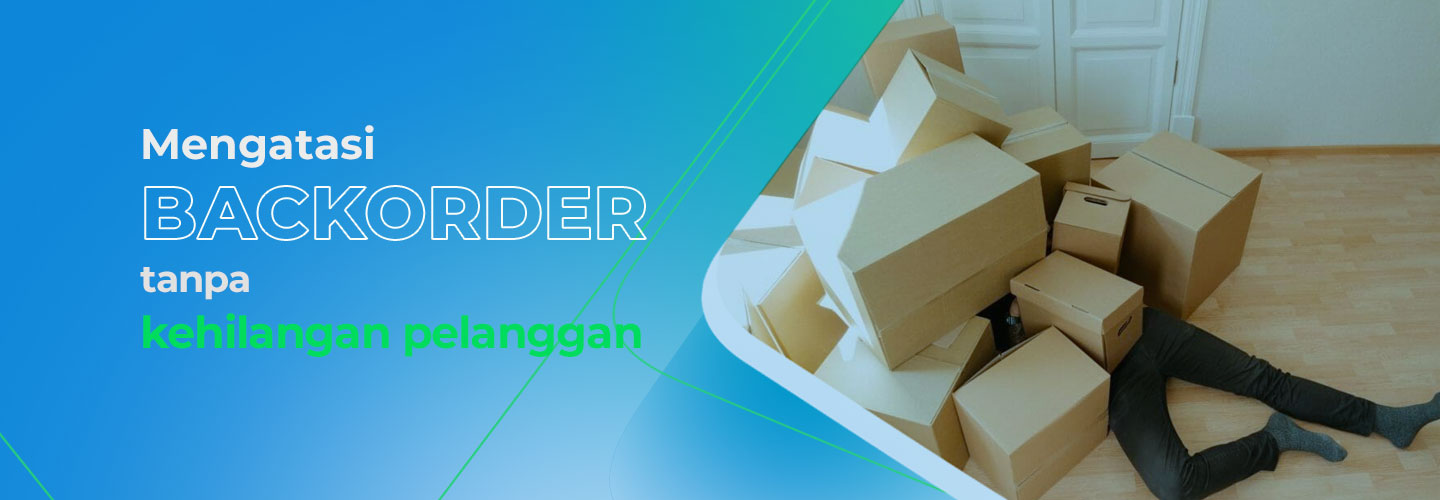Managing Backorder Without Losing Customer

In e-commerce, it is possible for a product that has been ordered to turn out to be empty or out of stock, this situation is called a backorder. This usually happens when there is a new product launch, a big sale, such as a flash sale or double date promotion. However, this can also occur during everyday online shopping.
If this situation happened to your customer, what would they do? Will they cancel the purchase? Are they willing to wait for the product to arrive? or they go to another store? Of course you don't want these things to happen. Therefore, here are some ways you can deal with backorders.
How to Manage Backorder So You Don't Lose Customer
Unlike shopping at physical stores, shopping via e-commerce can make buyers navigate products more quickly. There are times when buyers find something they don't like, such as expensive shipping costs, long estimated product arrival times, out of stock, and other problems in the shopping cart.
When these things happen, you are not only risking their order, but also the brand's value and image. The following are things that need to be considered so as not to lose customers due to backorders
.1. Inform Customer
When interacting with buyers, communication is key. Don't let shoppers keep shopping at your online store only to find out that the product they want is empty or less than what they wanted. Therefore, let the buyer know when the product is out of stock, and let them know the estimated time the product will be back in stock.
2. Provide Managable BETA
You don't want customers to leave. For that post the estimated time of arrival of your product, so that customers are not confused. You can also provide information on the availability of goods via social media, email and e-commerce chat.
3. Prepare Email Database
Collect the email addresses of customers who wish to be notified once the product is back in stock. You can also notify customers that a product is restocked, best sellers, or limited. This is done to make the customer feel happy and create a sense of urgency to buy. Because customers know that products that are frequently restocked, best sellers or limited are favorite products and are likely to run out faster.
How to Minimize Backorder
Backorders are a seller's nightmare. Backorders are never planned, but the possibility of them happening is always there. Therefore, pay attention to the following ways, so that you are ready to deal with possible backorders:
1. Prepare Reverse Stock
As an e-commerce business owner, you need to have an inventory management system that can track product stock in real time. To minimize overwhelming demand or problems from suppliers, always provide products in a safe and high enough quantity.
To find out the safe amount, you can estimate the requests and orders that will come in. Actively maintaining stock, tracking inventory, and replenishing inventory will prevent you from running out of stock.
2. Calculate and Manage Reorder Benchmark
Before re-ordering a product, you must pay attention to the minimum number of SKUs. For the benchmark, determine the number of SKUs that must be owned, if the numbers have touched the benchmark, it's time for you to re-order the product. With this benchmark you will save time and stock will be safe.
If necessary, use software that allows you to calculate and set this benchmark. Notifications in the software will later be a sign for you to re-order the product. When doing this you need to take into account promotions that will be carried out, flash sales, and new product launches.
3. Regularly Monitor Inventory Levels of Popular Product
Compared to other popular products have the possibility of selling faster. In the ecommerce market nothing goes 100% according to plan. Therefore, to inform buyers about the availability of goods, make sure you keep an eye on your inventory.
4. Have Plenty of Supplier
Working with suppliers has its advantages. Because when the main producer cannot produce quickly, other suppliers may be able to produce products according to the expected time. That way, your product stock will be safe and avoid backorders.
5. Order More Products
You can always avoid stockouts by ordering products in bulk. Keep in mind that a large number of items allows the warehouse or storage area to become full so that storage costs increase.
Inventory holding costs will depend on your product and storage needs, number of SKUs, location, inventory turnover rate and how you store stock either in-house or outsource. Compared to the others, this method may cost a lot. If you have limited costs, recalculate other possibilities. Because maybe there are other business strategies that need to be done.
When you open an online business, it means you open a shop for 24 hours. You can't be sure when the customer arrives and the product stock comes out at that time. Therefore, regardless of the field of business, managers must know the flow of goods/materials from before they enter the company until the goods reach the consumers.
Through Supply Chain Management, there are various ways that can be used to ensure the supply chain process runs optimally. This is important to ensure that the company's strategy that has been neatly designed can be executed properly with the support of a reliable supply chain.